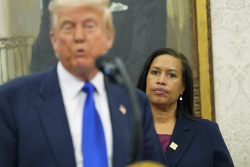Although the US military has been using unmanned aerial systems for intelligence and kinetic missions for decades, the Pentagon rightly recognizes that drone technology continues to evolve.
The US Army is creating a new joint interagency unit to counter the threat of small Russian, Iranian, and Chinese drones.
The move comes after global military events have highlighted the acute threat of small unmanned aerial systems.
The Pentagon Just Set Up a New Counter-Drone Unit
Last week, Secretary of Defense Pete Hegseth announced in a memorandum the establishment of a new interagency task force to lead the quest for counter-drone capabilities.
Joint Interagency Task Force 401 (JIATF 401) will serve as the Pentagon’s point organization for testing, developing, and introducing technologies for countering small unmanned aerial systems.
“The Department has maintained pace with its adversaries in conventional warfighting capabilities. However, the small UAS threat continues to grow exponentially and is becoming increasingly sophisticated,” the Secretary of Defense noted in his memorandum.
Hegseth referred to issues resulting from the number of Pentagon counter-drone organizations that have increased since 2020. More does not necessarily mean better, the Secretary of Defense suggested, highlighting that the different units “often are unconnected to each other … DoD needs a single focal point to centralize, coordinate, and lead these efforts.”
Per Hegseth’ memorandum, the Secretary of the Army has until the end of the month to provide an implementation plan that includes the necessary resources, structure, and authorities to enable the new counter-drone unit to commence operations.
“My priorities for transformation and acquisition reform include improving C-sUAS [counter small unmanned aerial system] mobility and affordability and integrating capabilities into warfighter formations,” the secretary stated.
Small drones are playing an important role on the tactical level. As witnesses from the battlefields of Ukraine, militaries now use small drones to find, fix, disrupt, and attack enemy forces.
How the New Anti-Drone Task Force Will Actually Work
JIATF 401 will be a jointly manned unit from across the military services. Personnel from federal agencies will also be eligible for assignment as liaisons to the counter-drone unit.
The creation of the new unit means that the Pentagon will disband the Joint Counter-Small Unmanned Aircraft Systems Office (JCO), which had been the lead organization for counter-drone operations up to the present.
“[The] DoD must focus on speed over process by disestablishing the JCO and establishing JIA TF 401 with expanded authorities to execute capability development and delivery timelines that outpace the threat. This change is fully aligned with the President’s direction to reestablish air sovereignty over the United States. DoD must enhance its C-sUAS capabilities to protect personnel, equipment, and facilities at home and abroad,” Hegseth wrote.
Unmanned aerial systems now play a key role in many aspects of modern warfare. From strategic strikes deep behind enemy lines to artillery reconnaissance on the battlefield to tactical strikes against individual enemy soldiers and tanks, drones are changing the way militaries wage war.
Although the US military has pioneered drone development and has been using unmanned aerial systems for intelligence and kinetic missions for decades, the Pentagon rightly recognizes that drone technology continues to evolve. The new Army counter-drone unit announced by Hegseth is a step in the right direction to deal with one of the most pressing threats on the modern battlefield.
About the Author: Stavros Atlamazoglou
Stavros Atlamazoglou is a seasoned defense journalist specializing in special operations and a Hellenic Army veteran (national service with the 575th Marine Battalion and Army HQ). He holds a BA from the Johns Hopkins University and an MA from the Johns Hopkins’ School of Advanced International Studies (SAIS). His work has been featured in Business Insider, Sandboxx, and SOFREP.
Image: Shutterstock / Joshua Sukoff.

















